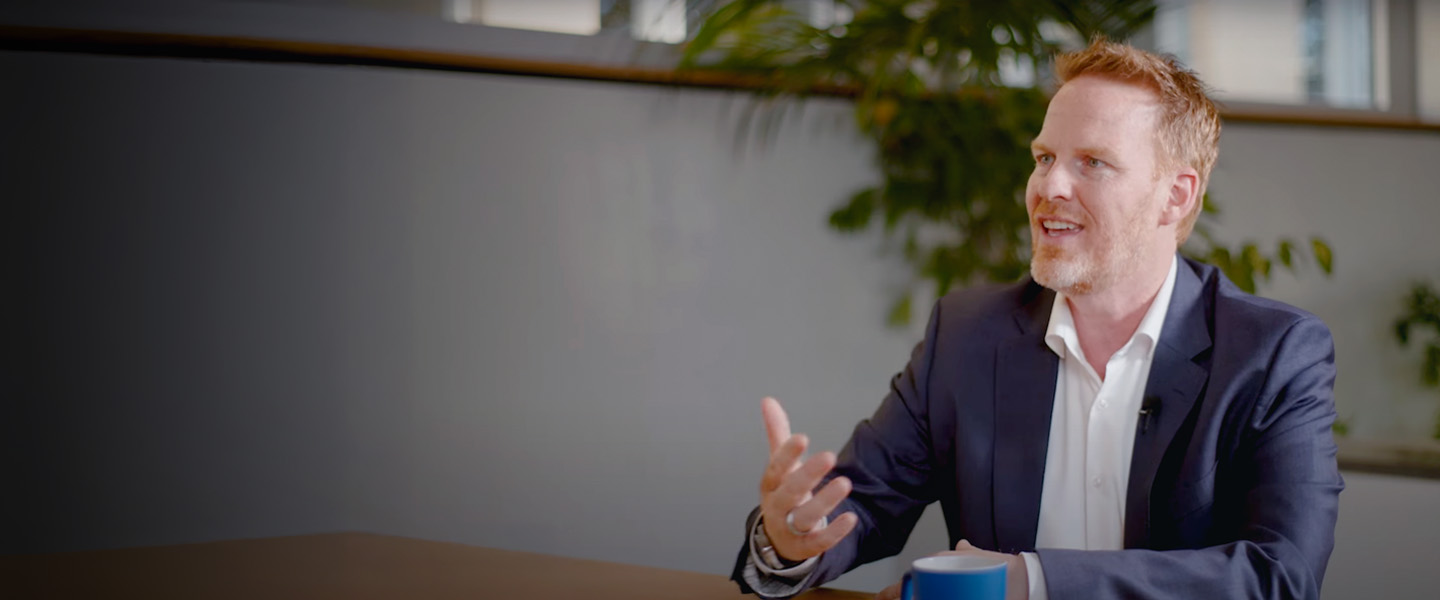We are in a world of regime shifts: pandemics; trillions of debt; the climate crisis; social, technological and political transformations – all indicative of a different future for the world and for investments.
Legacy investment strategies and structures will suffer as father time remains undefeated. The future will not reflect the recent past. Classic asset allocations, strategic or tactical, (equities vs. bonds vs. alternatives) and classic market thinking (e.g. alphas, risk premia and search for yield) will be impaired. Processes supporting risk-return trade-off decision-making, such as traditional asset and liabilities management and portfolio construction tools will be challenged. Organizations and individuals stuck in these legacy processes need to revisit them with the latest thinking.
This article explores how to develop a best-in-class governance of investments in current times. We combine the latest governance research with substantial investing expertise to distill a systematic methodology toward best practice. A professional and modern approach to governing one’s investments is key to portfolio performance and financial success.
Throughout our years of practice with best-in-class institutions, we have found that a sound governance of investments is based on four core principles, outlined below.

Principle 1: Objectives and constraints
The investment problem is one of dynamic optimization toward one or multiple objectives under constraints. We have been surprised to discover that some investors have only high-level generic objectives but no specifically defined objectives to follow through with a corresponding investment strategy. One pension fund trustee hoped to improve its funding ratio but acknowledged that this was not a declared objective of its classical investment portfolio. It had a return expectation-based objective that had no link with the funding ratio of the plan and underlying liabilities.
The definition of objectives is key, and typically very personal. Not everybody wants increased expected returns. Some want to handle uncertainty, some want resilience (for example expressed as a lower barrier), others prefer a target on volatility (while accepting tail or black swan events).
Then come constraints. We all face constraints. Even the wealthiest sovereign wealth fund from the safest country faces constraints. These constraints may well be economic, they can be political, or even social and cultural. They will affect how we invest optimally, especially in dynamic times. The most sophisticated actors already take into account their constraints, but only in a static way.
The simplest of all constraints are economic liabilities. From pension liabilities to corporate debt, or governmental expectations, these liabilities affect the border conditions of our optimization and need to be considered for a successful optimization. All too often, the investment function (or the investment committee) is so isolated that it seems to think that the “sky is the limit”! Unfortunately, sky objectives make for rough landing when the ground approaches… and they do not let you fly as high as wished for either. One wealthy family had not considered the financial demands of its fourth generation coming of age when reviewing the liquidity of its portfolio. Having adopted some bad habits and with its cash flow strained for distribution, the family council decided to dispose of its core asset to increase its liquidity, thereby, according to some, selling the soul of the family. A fund with no debt may well have long-term liabilities!
While it seems natural to consider objectives and constraints (in practice it is hard to do and must be done explicitly), they often need to be combined in complex organizations. For example, multiple funds may have multiple objectives and thus a composite-objective needs to be created. Optimization will be done across several dimensions. Consider for example financial performance objectives mixed with sustainability objectives. A large public plan with a fiduciary duty to improve returns typically has to consider all performing sectors of the economy while respecting national public policy halting investment in say tobacco and coal. Composite objectives might have differing time horizons, with a mix of short-term and long-term objectives.
Consider stakeholder views according to different stakeholders’ agendas. One well-focused emerging market sovereign wealth fund did so in an impressive way: The fund professionals identified three distinct key objectives, a reserve fund for the future generations, a development fund for the country’s economic base and a reserve buffer for the state. Once the objectives are clearly defined, professionals can align the investment strategy accordingly.
Often the multiplicity must be dealt with at the organizational level: boards, trustees themselves, and consultants can lead to contradictory perspectives that are not built into a rational composite assessment but are the result of a weak compromise. Classic board or committee governance then becomes essential to drive the right focus to the composite purpose.
In general, our experience shows that we are less concerned by the complexity (multiple objectives across different dimensions) than by the lack of clarity and focus (lack of institutional commitment behind these objectives, especially in “political” environments). Complexity can be dealt with smartly and rationally (think game theory and smart optimization) – fudging, sandbagging and manipulation less so. Portfolios exposed to the former widely outperform those exposed to the latter.
Self-awareness clarification questions on Principle 1
- Am I clear about our investment objectives? Is there a hierarchy or priorities among the multiple objectives?
- What are our return and risk objectives?
- Which time horizons are we considering?
- What are our economic liabilities? Do we have other liabilities – social, cultural, technological?
- What are our liquidity constraints? What other constraints do we have?
Principle 2: values and culture
Investments do not occur in a vacuum, they influence. They influence politicians, businesses, decision makers. Principled decision makers have been driving economic growth and stability as well as social well-being. For example, Ferdinand Pecora in the 1930s deeply influenced the reconstruction and resilience of the US economy after the great recession through Glass Steagall, the SEC, and other mechanisms of governance.
Good governance standards themselves enhance investments. Investments in turn are a driving force of social development and well-being. We are confronting large challenges in the world, high levels of debt, climate risks, the menace of stranded assets, where values will impact timing and worth of the investments as well as real economy dynamics.
A culture of good governance within the organization is thus an integral driver of success. Such a culture is reinforced by four key factors: 1) quality individuals, knowledgeable, focused and dedicated, with clear roles; 2) well-designed and rich information and high transparency; 3) sophisticated processes (such as nomination, audit, risk, strategy setting); and 4) the embedded values of accountability, openness and constructive dissent. The ability to discuss and to challenge are fundamental to high quality internal governance. These lead to productive discussions on investment committees or boards of trustees toward conclusive perspectives. They combine with agility as the dynamism and complexity of the world asks for a parallel agility and dynamism of investments. This can be done in a consistent manner with long-term perspectives (see Cossin, Didier (2020), High Performance Boards, Wiley for more details).
Even greater than governance in culture and values is stewardship, the knowledge that we are here to pass on to the next generation something better than what we inherited, the ability to include the long term with the social impact of our choices and our focus on the well-being of our societies. Empathy and humility are thus central to investments as finance is not detached from society, and the suffering or prosperity of some. This is not about a neo-Malthusian world of cleansing and purging but about improved well-being for most.
Many specialists will have in mind the example of a prominent sovereign wealth fund that systematically put forward values of cohesion and integrity for the country and thus over the years permitted the enhancement of a sound flow of investors toward worldwide success and recognition.
Investments, while managed long term, are essentially intergenerational forces that will drive the future of our children. No investment governance is possible without underlying values and culture and key to an organization’s success is to be aware and groom the values and culture it wants to have.
Self-awareness clarification questions on Principle 2
- What are our key values when investing? Which, if any, are truly distinctive from those of our peers?
- What is the culture of investment decision taking in the organization? Are investment decisions organized in a transparent and well governed manner? How are our collective decision processes overall, first class, average or worse? And our supervision processes?
- What is the quality of the discussions we have internally? Who can I engage materially to be challenged and to challenge myself? Do we have enough diversity for real challenge?
- Are there implicit assumptions that we don’t express? Political sensitivities we cannot discuss? And are we effective, dynamic and energetic in our decision making overall?
Principle 3: forward assumptions and views
In a world of regime shifts, forward views that consider the full spectrum of possibilities require free and open minds leveraging deep expertise of diverse backgrounds and dimensions. Forward views open the range of outcomes necessary for good risk and opportunity thinking both in terms of strategy and in terms of allocation.
We find that scenarios based on the mathematical modeling of complex systems allow a more consistent approach than the usual gut-feel market views hinged on mental biases. Such scenarios go beyond conviction although they can be based on convictions. By scenarios, we do not mean stress tests or projections of catastrophic perspectives, but true changes in fundamentals that impact investment performance at large and change the fundamental assumptions behind diversification in a realistic way. They are a tool of decision-making.
Scenarios also enable the combination of scientific parametric and non-parametric approaches (for example the impact of interest rates on default rates) with evidence based on experience and informal discussions.
Such scenarios will challenge fundamental elements such as the role of currencies, the impact of monetary policy on the real economy and social evolution, the basis for diversification, the assumptions underlying growth, and even question data itself. For example, aggregate CPI data may hide areas of deflation and areas of strong inflation that impact businesses and society aggressively in different industries. It might result in strange inflation – a combination of deflation and inflation!
Even social and cultural evolution would ideally be part of the scenarios, for instance climate change impact on societies and consumer behaviors. While these forward views open the funnel of possibilities, they also help frame portfolios across time horizons (short, medium and long term).

Such scenario-based forward views enable a rational approach to dynamic asset allocation. They make it possible to tackle deep contextual matters such as governance quality in central banks and countries and their impact on asset prices, all intertwined as illustrated in the figure 2. They can include disruption factors such as inequalities, deglobalization, lack of trust, monopoly powers, demographics, health and mass extinctions. Elaborated forward views ensure consistency of analysis across the spectrum of parameters.
Such a methodology allows for a consistent dynamic allocation matching a risk-budget that bridges the risk tolerance of the fund trustees with their risk appetite alond different world contexts. When well done, it then becomes a fundamental driver of performance.
Self-awareness clarification questions on Principle 3
- What are the top three or four regime shift scenarios we should think of?
- How sophisticated and consistent are we at elaborating our forward views for our portfolios? Do we have consistency across asset classes?
- Have we considered classical scenarios (monetary policy, interest rates, currencies) as well as less classical ones (governance, climate change, technology impact)?
- Could we be missing something big and probable on both risks and opportunities (social evolution, private markets evolution, oil-inflation decorrelation, climate change impact or other)?
- Are we differentiating enough stress tests from actual potential outcomes?
Principle 4: top-down across asset classes
Trustees in the past often relied on basic metrics of performance of each asset class such as alpha and beta to assess how well they were doing. Cynically, we can say they would check the corresponding index, look at how well they had done, and feel reassured. Trustees would typically rely on asset managers skills in bringing alpha from a benchmark through a bottom-up stock selection process, while waiting for the beta from the market to perform through their selection of benchmarks.
Unfortunately, this traditional construction has grown obsolete. Today’s risks hit across classes, and often performance drivers too. Diversification cannot be defined in such a simple way anymore and this means understanding and driving a portfolio top-down across asset classes.
Indeed, look at a key factor such as currency. Most investors are aware philosophically of the impact of the weakening of the dollar. But how many have truly looked at their PE or alternatives direct and indirect exposures, or even better at their liability exposures and at their total portfolio exposure? If this is not done for such a simple variable, what hope is there on monetary policy, tech disruption, credit spreads, climate resilience, pandemics, etc? And even worse, what implicit assumptions are built in asset classes diversification thinking? For example, are commodities diversifying inflation at a time when oil and inflation seem doomed to decorrelate?
One corporate pension plan we worked with in Europe looked carefully “down” at the monetary policy risk factor. All traditional portfolio construction processes had a view in the late 2010s that interest rates would normalize. The plan trustees asked themselves the question: What if the interest rates stay low for a long period of time? The impact of interest rates across the overall portfolio, across asset classes and across liabilities was taken into account with a top-down view. All bottom-up asset selection was modified to tune exposures to duration, credit risk and even equity risk exposure to the interest rate cycle. The plan Chief Investment Officer (CIO) ended up receiving multiple “CIO of the year” awards…
Good investment governance here consists of identifying the top-down risks/opportunities for the portfolio of assets and liabilities and minimizing the downside risk of being wrong while maximizing the upside risk of being right. Identifying the key dimensions to consider requires good governance principles: diversity of perspectives for creativity and innovation, constructive dissent for open and productive discussions, good chairmanship toward rich and conclusive perspectives.
Forward looking views and scenarios of regime shifts are particularly relevant to revisit the roles of each asset class in a portfolio with a top-down view. For example, the traditional role of commodities, taken as an asset class, is to deliver some diversification and be a natural hedge to inflation. In a regime shift where oil decorrelates from inflation, the top-down role of the asset class needs to be reassessed. This triggers a domino effect on all asset classes: a top-down approach is needed.
A top-down investment approach can be implemented in two ways. First, by a traditional repositioning of the portfolio from a bottom-up perspective. This can include adapting the benchmarks, or reflecting on the concentration of the investments, changing the investment management mandate in terms of sector, selection of geographies, shifting allocations from one asset class to another or using liquidity for new objectives or constraints. Second, by dynamically using the risk tolerance or policy range within a portfolio. The latter methodology consists in dynamic smart rebalancing. It works like a super tanker that uses a slight shift of power and direction and reorients itself via its own natural inertia. The efficiency of this approach is not to be underestimated.
Self-awareness clarification questions on Principle 4
- How did we identify our top risks? Was the process creative and diverse enough to get to the true risks?
- What are the top risks that span across asset classes and across sectors of the portfolio? What are the diversification drivers?
- What are the top risks to our liabilities?
- Do our investment committee and board have differentiated views on key risks?
- How dynamic is our allocation and how smart are we at rebalancing across classes and risks? Are we aligned to our long-term objectives across our identified risks?
Conclusion
In times of regime shifts, the governance of investments is central to success. Legacy structures and processes are challenged. Our experience shows that a successful practice is based on these four core principles:
- Objectives and constraints
- Values and culture
- Forward views
- Top-down across asset classes












